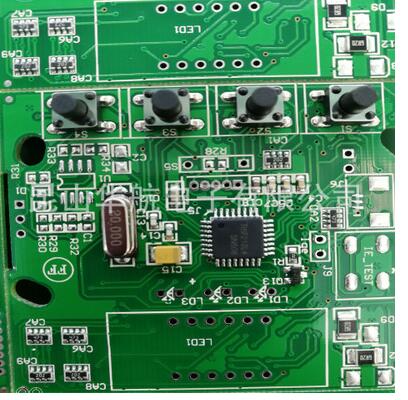The quality of PCBA processed products determines competitiveness
The PCBA processing quality of the product determines the product's life cycle, and also determines whether the company can survive and the competitive electronic processing environment.
One, material inspection
Material inspection is IQC. The inspection of materials is one of the first steps to ensure the quality of production and is the basis for the smooth progress of SMT patch processing. Next, we will give you a detailed introduction to the main points of inspection.
1, incoming inspection
Inspect whether the specifications, production, model, withstand voltage, appearance and size of electronic components and other materials are consistent with the BOM list provided by the customer to ensure that the materials meet customer requirements. There is also chip inspection. The size, pitch, package and pin of the chip, etc., all need to be QC tested.
2, upper tin inspection
Conduct tinning inspection on IC pins and plug-in component materials to check whether they are oxidized and the material's tin-bearing condition.
3, PCB board inspection

The quality of the PCB board determines the quality of the finished PCB, otherwise there will be false soldering, false soldering and floating height. Therefore, it is necessary to check whether the PCB board is deformed, flying lines, scratches, circuit damage, and whether the board surface is flat.
4, PCB board eating tin inspection
The degree of wettability affects the tin-eating rate of the PCB board, and a poor tin-eating rate will lead to insufficient solder joints.
5. Through hole inspection
The size of the through hole position is determined according to the size of the component. If it is too small or too large, the component cannot be plugged in or fall off.
2. Solder paste inspection
Solder paste sources are supplied by specialized suppliers. The solder paste adopts the "first in, first out" standard of use in the use process, that is, the first to be purchased, the first to be used. The storage temperature of solder paste is generally between 0°C and 10°C, plus or minus 1°C. The solder paste needs to be thawed before it is used. Generally, it is about 4 hours at room temperature. It needs to be marked for use, and the rest needs to be recycled. However, the second time of recycling needs to be recycled to the supplier for processing to avoid environmental pollution. The solder paste needs to be stirred for 5 minutes with an automatic mixer before use to prevent air bubbles from entering the soldering process.
Three, steel mesh and scraper control
The size of the steel mesh is generally 37cm*47cm, and the tension is 50~60MP. Generally, a tension tester is used for tension testing. The storage temperature of the steel mesh is best controlled at 25 degree Celsius, and the edges of the steel mesh are rubber edges. If the temperature is too high, it will become brittle and cause damage to the steel mesh. The scraper is operated at a 45 degree angle, and the ordinary steel mesh scraper is scrapped after being used 20,000 times. Because the thickness of the steel mesh will become smaller, the tension of the steel mesh will be affected and the tin scraping will be incomplete.
Fourth, placement machine adjustment and the first QC
Adjust the coordinates of the automatic placement machine according to the coordinate files such as the BOM, template and ECN file provided by the customer to ensure accurate measurement and high placement accuracy. This is the first piece of placement QC inspection. The quality inspector checks whether there are missing stickers, flying, placement direction and placement accuracy, and so on. Mass production can only be carried out after confirmation.
5. Reflow soldering control and second QC
The reflow soldering temperature setting requires different parameter settings according to the material of the PCB board, such as cardboard, 2-layer board, 4-layer board or ceramic board and so on. At the same time, the PCB board passing the furnace is to control the gap, direction and position of the board and so on. At this time, perform the second QC inspection test for the first reflow soldering to ensure that there is no melting of tin, whether the components are yellow, and there is no false soldering, and mass production after confirmation. This test requires an AOI test to check whether the monument is erected or not.
Six, the third QC test
This inspection is a QA inspection by the Quality Department. The quality department needs to conduct random inspections on PCB finished products to ensure that they are packaged and shipped after they are qualified.
Implement PCBA quality standards
In terms of PCBA processing quality control, strictly implement the ISO9001:2008 quality management system. The ISO review agency strictly reviews the company's PCBA production quality control plan, establishes that the production site meets the standards and implements it in accordance with the prescribed quality control plan and measures. The audit includes the ability of the production operator, the production process and work instructions, the equipment meets the requirements, the purchase and warehousing of raw materials, the production documents, the production site environment and safety assembly, the node setting of the production process, etc., forming a complete set of operations Mentor the plan.